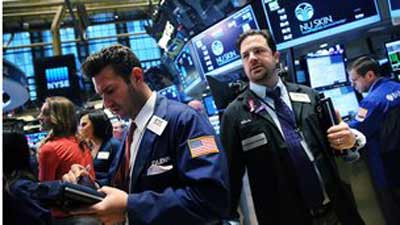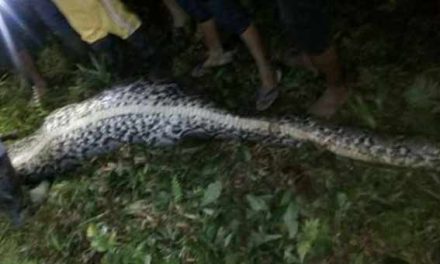Adelaide, Australia (BBN)-The mystery around the disappearance of some of Earth’s largest animals – “megafauna” like mammoths, giant sloths, and mastodons – has long confounded and fascinated scientists.
For several decades, the leading theory pointed the finger at ancient humans living 50,000 years ago, who may have hunted the animals to the point of extinction, reports The Christian Science Monitor.
Other theories suggested that climatic shifts and sudden cold snaps may have played a role in the disappearance of the giant mammals.
A new study suggests that rapid warming – not human activity – may be the primary cause of the extinction of megafauna during the last Ice Age about 60,000 years ago, known as the Pleistocene.
Scientists say the study reinforces the idea that the speed of climate changes poses a greater threat to animals than the scale or severity of climate changes – and that could have major repercussions in our era of global warming.
“The real message here is that rapid changes are really tough, and [species] can get outrun by the climate changes,” says Chris Field, founding director of the Carnegie Institutions Department of Global Ecology, in an interview.
By comparing advanced analysis of ancient megafaunal DNA and radiocarbon dating with detailed geological records of severe climate events from ice cores and ancient sediments, researchers found that the gradual die-off of those large mammals coincided with sudden, rapid warming events during the late Pleistocene.
The study, published in the journal Science Thursday, is the first to link specific climate events to the localized extinctions of megafauna.
The giant mammals survived until about 11,000 years ago, according to the fossil record, but the gradual extinction may have resulted from climatic pressures beginning tens of thousands of years earlier.
The study singled out specific, short-term periods called “interstadials,” which could involve temperature increases from 7 to 29 degrees Fahrenheit over just a few decades.
According to the study authors, the rapid temperature changes had a ripple effect on temperature and vegetation, and megafauna were not able to adapt quickly enough.
“This abrupt warming had a profound impact on climate that caused marked shifts in global rainfall and vegetation patterns,” said Alan Cooper, director of the Australian Centre for Ancient DNA at the University of Adelaide and lead author of the study, in a statement released with the study.
Professor Field, who wasn’t involved in the study, says he was impressed with the detail with which Cooper and his team were able to find of not only when megafauna were dying out, but what the climate was like at the time.
“One of the things we’ve had lots and lots of questions about in the past is, ‘Were these things occurring this century, or this other century?’ ” says Field. “To have that resolution is really impressive.”
Yet while the study shows that sudden interstadial warming precipitated megafaunal extinction – different species appear to have gone extinct in different regions over tens of thousands of years – the authors added that man still played a role.
Chris Turney, from the University of New South Wales and a co-author of the study, said in a statement that the rise of ancient humans may have applied the “coup de grace” to megafauna populations already under stress.
“It is important to recognize that man still played an important role in the disappearance of major megafauna species,” he added. But he said that the abrupt warming “set the extinction events in motion.”
This dual pressure on global biodiversity from humans and climate change is especially significant given what’s happening with our environment right now.
While it may be hard to notice when it’s happening around you, some regions of the planet are now warming just as fast thanks to human-induced climate change, scientists say.
“Looking at global warming on geological time scales, it is really rapid [change],” says Katharine Mach, director of science for Working Group II of the Intergovernmental Panel on Climate Change.
“Climate change is adding stressors and amplifying outcomes,” she adds. “What does this mean for biodiversity on earth?”
Climate change could drive up to 16 percent of the planet’s species to extinction,
The Monitor’s Pete Spotts reported earlier this year. Last year, the International Union for Conservation of Nature, which compiles an annual list of threatened species around the world, reported that more than 22,000 plant and animal species are threatened with extinction.
“Even without the presence of humans we saw mass extinctions,” said Cooper in his statement. “When you add the modern addition of human pressures and fragmenting of the environment to the rapid changes brought by global warming, it raises serious concerns about the future of our environment.”
Ancient humans did not play a significant role in the interstadial warming.
But Field adds that modern humans are now effectively recreating that kind of rapid climate change.
“The fact that we’re warming rapidly now raises a flag,” he says. “We have both of the things that have caused problems in the historical record: warming and rapidity.”
BBN/SK/AD

No Subscription? You Are Missing Out!
Join the business leaders of Bangladesh who rely on BBN's original reporting and in-depth analysis on business scenario of the country. We send only one daily email. No Spam Guaranteed!









